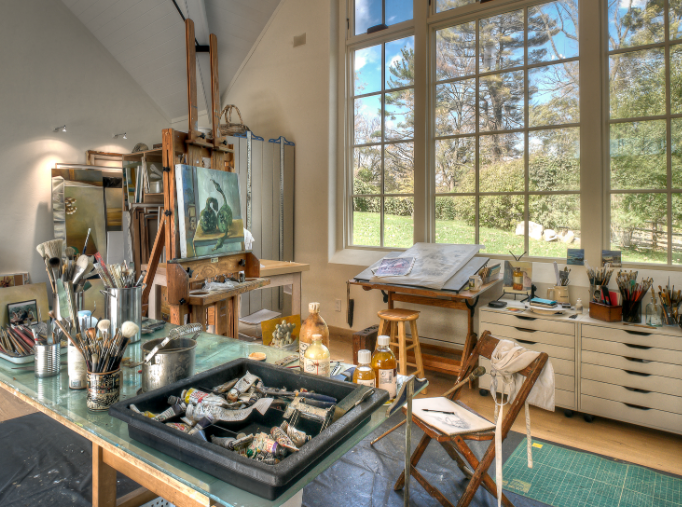Planning Your Space
In order to get the most out of your new studio space, you need to spend some serious time planning it out. If you know the dimensions of the space you’re moving into, you can draw up your own blueprint – and draw up your various furnishings to scale, too.
With this blueprint, you can create some mock-ups of how your studio will be, giving you a clear idea of your options. Trialling different layouts can give you advance notice of which setups are more likely to work for your own workflow. While drawing these up, don’t forget to consider where your light sources are!

Getting Handy
Studio spaces are never perfectly suited to a given artist or maker’s craft; there is always a compromise when it comes to making a workshop or studio work. If you have the right permissions from your landlord (or if you own the space outright) you can do something about it – and make your space more personally suited to your work through the magic of DIY.
With your carpentry tools in hand, you can make your own partitions or stud walls to divide the space as you need. You might be in need of more storage, making an in-built corner closet a good idea for holding or hoarding your materials. You could even create more storage or working space for yourself by building a mezzanine, if your space is tall enough to facilitate one.
Creative Furnishing
You could even create your own furnishings to deck out the space; many studio spaces are a trade-off of light for size, or vice versa. As such, your standardized furnishings might not fit in your room plan. Building your own furniture might be especially useful for jewellery makers, who might benefit from making their own jeweller’s workbench to fit the dimensions of their space.
Set Some Ground Rules
Whether or not your studio will be seeing guests on the regular, you should endeavour to set yourself some ground rules for the studio. These might include whether or not alcohol is allowed in your space, or smoking or vaping. If you’re working with textiles, it can be good form to ban these from your space altogether – reducing the risk of staining or otherwise impregnating your work with undesirable materials. These ground rules keep you honest, your space clean, and your studio yours.




